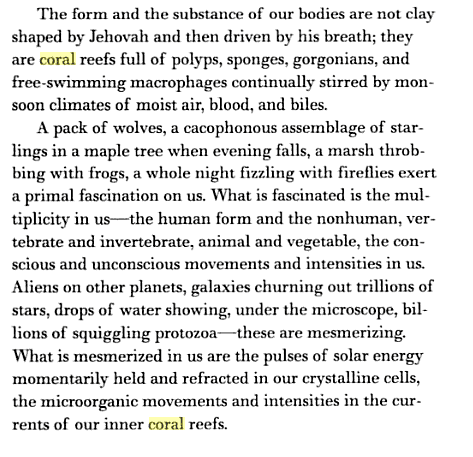Research Journal
-
June 13, 2009
the tourist as an invasive species
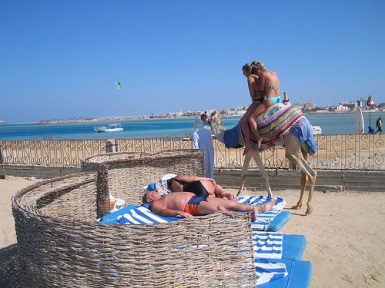
German Tourists. Photo: Ancia Ontour Here are some common traits belonging to invasive species . A tourist fulfills most of the criteria on the checklist.
- The ability to reproduce both asexually as well as sexually (garbage and cultural leavings as a byproduct)
- Fast growth
- Rapid reproduction (not restricted to babies)
- High dispersal ability (planes trains tour-buses cruise ships)
- Phenotypic plasticity (the ability to alter one’s growth form to suit current conditions) (dress native, get all the right travel gear, dip in and out of cultures)
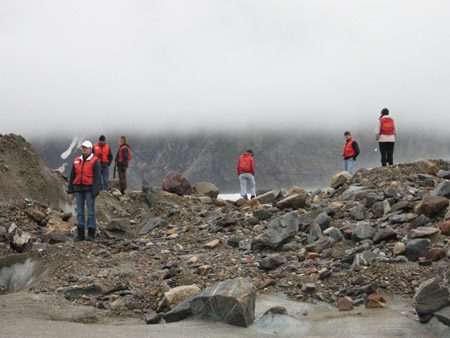
Tourists in Alaska - Tolerance of a wide range of environmental conditions (generalist) (again, specialized gear)
- Ability to live off of a wide range of food types (generalist) (when in Rome…)
- Association with humans (anthro-fetishism and the McDonald’s phenomenon)
- Other successful invasions (war and peace)
(from wikipedia)

Tourists buying postcards at Yellowstone National Park, 1946. Photo – Alfred Eisenstaedt - The ability to reproduce both asexually as well as sexually (garbage and cultural leavings as a byproduct)
-
June 13, 2009
GB Non-Native species list
From the GB Non-Native Species Secretariat:
The term ‘non-native species’ is used throughout this website and is the equivalent of ‘alien’species’ as used by the Convention on Biological Diversity (CBD). Invasive non-native species (the equivalent of invasive alien species or IAS) are broadly defined as species whose introduction and/or spread threaten biological diversity. Non-native species covered by this website include all fauna and flora with the exception of genetically modified organisms (GMOs), bacteria and viruses. Non-native species also refers to species native to Great Britain but outside of their normal range.
Here’s a list of fact files available on the GB NNS site:
http://www.nonnativespecies.org/01_Fact_File/06_Old_Fact_Sheets/Species include a plethora of water weeds, algaes, mollusks, (mostly transported in water ballast), and escapees from the agribusiness, pet and fur trades.
-
June 13, 2009
Invasive Species, defined 2
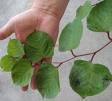
Japanese Knotweed From wikipedia:
Invasive species is a phrase with several definitions. The first definition expresses the phrase in terms of non-indigenous species (e.g. plants or animals) that adversely affect the habitats they invade economically, environmentally or ecologically. It has been used in this sense by government organizations as well as conservation groups such as the IUCN (International Union for Conservation of Nature).The second definition broadens the boundaries to include both native and non-native species that heavily colonize a particular habitat.
The third definition is an expansion of the first and defines an invasive species as a widespread non-indigenous species. This last definition is arguably too broad as not all non-indigenous species necessarily have an adverse effect on their adopted environment. An example of this broader use would include the claim that the common goldfish (Carassius auratus) is invasive. Although it is common outside its range globally, it almost never appears in harmful densities.
Because of the ambiguity of its definition, the phrase invasive species is often criticized as an imprecise term within the field of ecology.
-
June 13, 2009
Invasive Species, defined 1
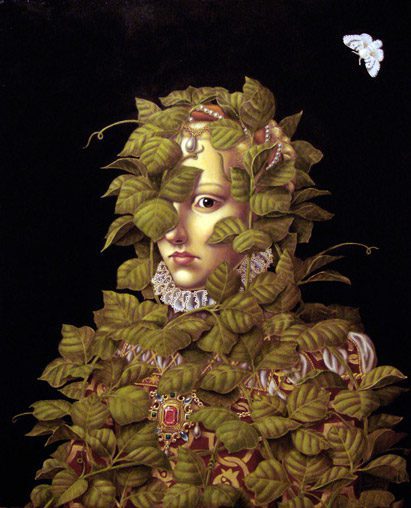
Madeline Von Foerster’s painting “Invasive Species II”. Here is an excellent description of invasive species from an environmental education web site, Eco-Pros in California.
Species of plants and animals that are not native (natural) to an area are known as:
non-native species
introduced species
exotic species
non-indigenous species
alien species
transplants
invasive speciesEstablished ecosystems have developed their own natural balance and controls over time, and the plants and animals within those systems find this balance suitable for survival, or they have been able to adapt in order to survive within those conditions. When non-native species from other ecosystems are introduced, they can upset that balance and bring harm to the established plants and animals, and the whole ecosystem.
Non-native species come from somewhere else and they are not natural to the ecosystem they have been introduced to. They may be harmless and beneficial in their natural surroundings, but they can totally devastate different environments.
When alien species enter into an ecosystem, they can disrupt the natural balance, reduce biodiversity, degrade habitats, alter native genetic diversity, transmit exotic diseases to native species, and further jeopardize endangered plants and animals. When there are no established natural controls, such as predators to keep the non-native harmful species in check, there can be a population explosion of the invasive non-native species causing an ecological catastrophe.
Not all non-native species are invasive and harmful. But many can completely take over and entirely change whole established ecosystems. These are the non-natives that invade an established environment; therefore, they are invasive.
Invasive species may be as harmless looking as green plants or a frog. They don’t have to be vicious looking to bring harm to an area. They may even be beautiful to look at. This could have a detrimental effect on native species if bees or other pollinators preferred the flowering displays of the invasive species over the native species. Many humans want to design their own ecosystems to fit their needs. They bring in ornamental flowering trees, non-native fish, specialty seeds, and unusual animals. This can wreak havoc on the natural species and the established habitat.
Ornamental exotic plants, flowers and trees, or animals that are brought into an ecosystem may increase the diversity of species locally; but, then the introduced species can take over, crowd out or kill the native indigenous species, and in some cases cause extinctions of particular species of plants and animals. This has happened in island ecosystems where alien species caused the total destruction of local species that existed nowhere else on the planet. Therefore, the species became extinct and the biodiversity of our planet further reduced.
Tremendous damage can occur from an insect species that bores holes in trees, or weeds that take over, or zebra mussels that clog up water systems (i.e., Great Lakes). There are many species that are not native to an area which can be very dangerous and cause harm and even death to humans (i.e., brown tree snake). A non-native species could be something that brings disease to an area or to people through introduced bacteria or viruses (i.e., Ebola), or possibly a plant that would crossbreed with other plants and cause major changes to plant life. When natural habitat or food supply is destroyed, by alien species or from other circumstances, animals have to leave to find shelter and food in an ecosystem which will sustain them. Some native animals cannot leave. Without proper habitat and food supplies, they die.
Many non-native species have been transported in the ballast water of ships and then are released into the waters in ports of call. Many more non-native species arrive in the products that are imported from other countries. Inspecting shipments of goods is overwhelming our human resources, such as in Florida where they have approximately 12,000 shipments of animals per year and only 8 inspectors. There has been an ever-increasing amount of international world trade in exotic species in exporting and importing of plants and animals (such as ornamental tropical fish, rainforest birds, exotic plants, and various species introduced for a purpose). This lines the pockets of the traders, shippers and sellers of these goods with huge profits of millions of dollars. But, who pays to manage and control the global transport of invasive species with regard to prevention of negative impacts? What and where are the controls, rules and environmental regulations to protect ecosystems, habitats and species from alien invasive species? Who pays for risk assessments prior to the importation of products and species? Who compensates those who have been negatively affected or lost their livelihood because a harmful species hitchhiked a ride in a plane wheel, a cargo container, in agricultural products, or in ships’ ballast water? Those who originally gained the monetary benefits from the invasives pay virtually none of the costs for environmental protection, nor are they generally held accountable for the negative environmental impacts they cause. The general public, future generations, and the planet’s environment and biodiversity end up paying dearly from the negative impacts of the exploitation of species, the loss of biodiversity in both the country of origin and the importing country, and for the environmental damage that occurs. Huge sums of money have to be expended to try and rectify the damage to species and ecosystems from the introduction of non-native species into the ecosystems. Once massive damage is done, there are cases where it is impossible to bring the ecosystem back to its “natural” state.
Non-native species don’t necessarily come from far away. They may come from neighboring areas, but from different ecosystems. If you have ever crossed a border between countries, you may have passed through an inspection point where inspectors ask if you are bringing any fruit, plants or animals into the country. The reason for this is to keep non-native species out of their particular ecosystems.
“Super-highways for non-indigenous species” have occurred in such places as South Florida, where natural aquatic habitats have been drained or diverted and modified to accommodate for new development. A network of man-made canals has allowed for the expansion of non-indigenous species that could result in altering established natural systems and cause significant economic harm. The Everglades, which has suffered serious decline over the years, is already in a threatened state. This once-vibrant and massive wetland ecosystem of many habitats, is now even further threatened by many fishes that have been introduced that are out-competing native species.
Other occurrences of non-native species being introduced to an area have been from aquaculture escapes, aquarium releases, state government bio-control, planting fish for sport fishing, and individuals that bring in species for various reasons, accidentally or on purpose.
And there are other Alien Species – Humans!
Did you ever think of yourself as an Alien Species? When we venture out into the wilderness to enjoy nature we are an invasive species. As “eco-tourism” has expanded worldwide, many thousands of people yearly invade pristine areas and change the natural balance of nature. Tourism has been thought to be a savior for financially poor, but biologically rich regions of the Earth. Tourists spend money; in fact, millions of dollars are spent on “eco-tourism.” But, who are the major benefactors of all that money? – the tourism industry. Many of the companies associated with “eco-tourism” are located in countries far removed from the eco-regions they send vacationers to. They are not impacted by the environmental changes which occur from the human alien species they ship off and fly off to the ecologically important hotspots of our planet.Along with tourists and related activities comes environmental destruction. Tourism brings in ships and jets carrying supplies and people, and the carriers and supplies themselves bring in more alien species (i.e., non-native plants, animals and organisms) which threaten and devastate native habitat and species. More people must also come to the tourist resort area to fill the jobs of the expanded tourism industry, such as in hotels, restaurants, and transportation fields. As more and more people take up residence, there is more construction and more pollution.
-
June 13, 2009
Print out and keep handy – fun facts about greys
-
June 13, 2009
Prince Charles advocates extermination of the greys
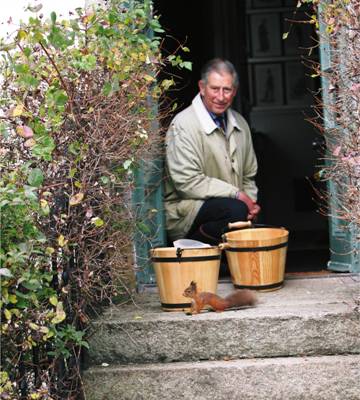
HRH THE PRINCE OF WALES, PATRON, THE RED SQUIRREL SURVIVAL TRUST (…is it taxidermied?) From an article by Paul MacInnes / guardian.co.uk, Friday 5 June 2009:
Prince Charles is the patron (naturally) of the Red Squirrel Survival Trust, and as such hates those grey bastards with a passion. So much so that rather than simply using his letter to call for action, he’s instead said that all grey squirrels must be killed because they’re foreign. Which may or may not have been an appropriate tone to strike.
“In order to be able to save the red squirrels and ensure their future in this country, it is absolutely crucial to eliminate the greys which, as you know, are an alien species to the UK and threaten the very existence of the reds,” wrote the heir to the throne in the week in which the BNP put forward an unprecedented number of candidates for election…
And this is from The Daily Mail, June 04, 2009:
As you are also no doubt aware, the greys are doing immense and increasing damage to hardwoods all over the country and threaten to compromise all our efforts to restore native woodlands, let alone to create community forests.’
Tree damage caused by squirrels
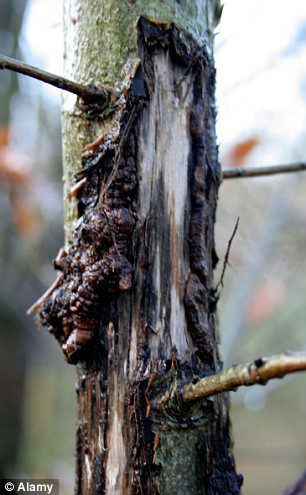
The prince said there was a ‘great deal of public support’ for control measures.
Indeed there is; Newcastle resident Paul Parker, who is the Baron’s lead commando in the Red Squirrel Protection Partnership (RSPP), states he’s got a lot of help from a volunteer army eager to rid the woodlands of the greys – many of whom are pensioners. Parker himself is up 22,600 dead ones, and counting.
-
June 13, 2009
There was a time when reds were the villified
BBC April 2009:
…for 43 years, from 1903, there was an active effort on estates across the Highlands to trap, shoot and kill reds.
By 1946, the Highland Squirrel Club had killed 102,900 squirrels and paid out £1,504 in bounties.
Tails were submitted as proof of kills.
-
June 13, 2009
ür cute.

Photograph: Craig Doogan Links to literature: http://www.europeansquirrelinitiative.org/reports.html
Including
THE RED SQUIRREL
Redressing The Wrong
by Charles Dutton -
June 13, 2009
Uh-Oh…Greys beware: here comes metasquirrel
A genetic mutation of the UK enemy squirrel threatens to out-grab even the wild and power-hungry greys:

Photo: Alamy This from 2008 – seems to have been affecting East Anglia mostly. Not sure what’s happening with them now.. been quite in the news.
The black squirrel – a genetic mutation of the grey – was first recorded in Britain 90 years ago but now accounts for half of all squirrels in some parts of the country.
They have higher testosterone levels, which is thought to make them more domineering and territorial, while their colouring makes them more attractive to female greys.
-
June 12, 2009
Your mouth is a coral reef
Tags:Talking to Grant Burgess at the DOVE Marine Lab today about the defensive slime that bacteria produce, in order to keep from being decimated (by enemies, by antibiotics) reminded me of Alfonso Lingis’ description of the body as bodies, systems inside of systems, from his book “Dangerous Emotions”:
